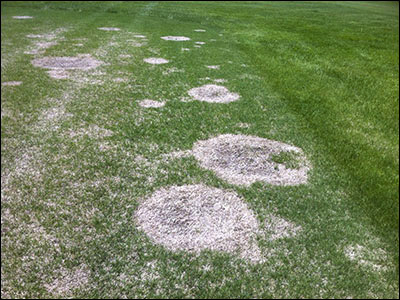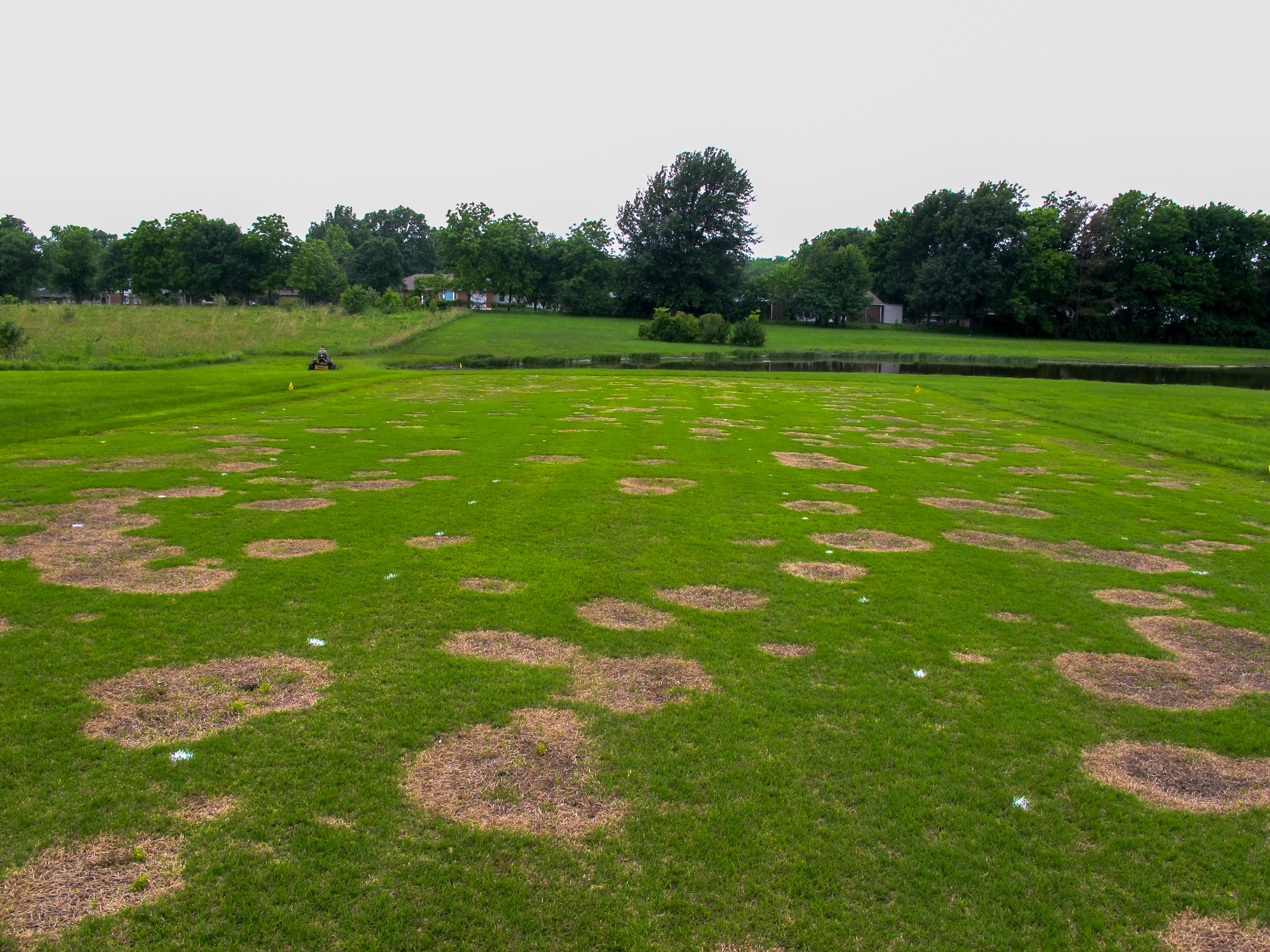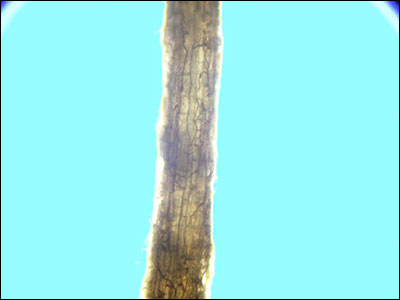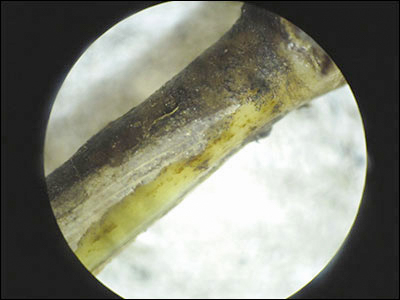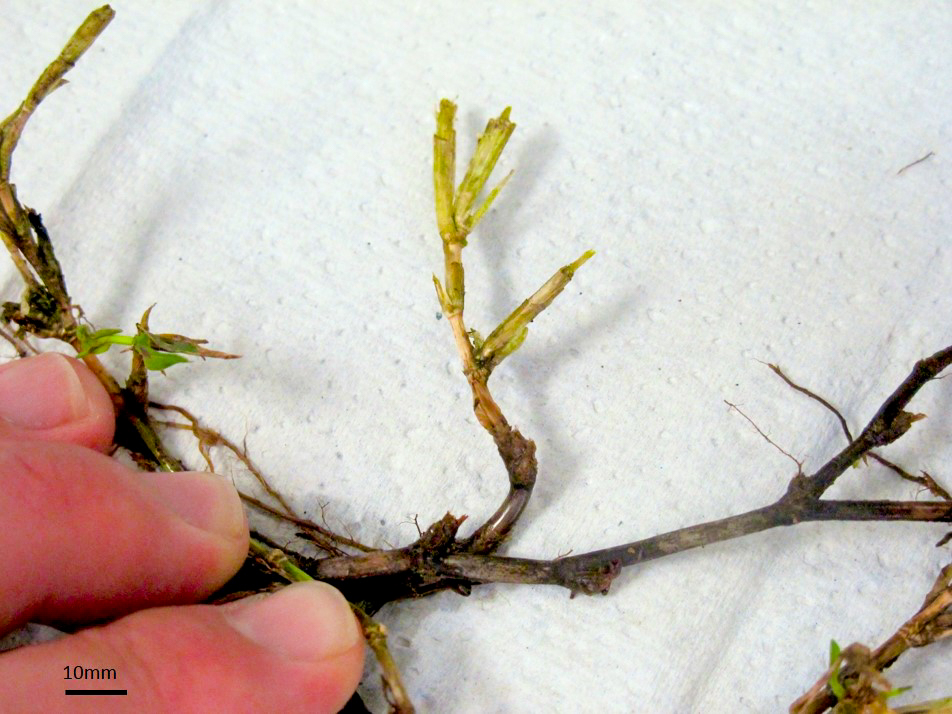Ophiosphaerella spp.
![]()
![]()
![]()
![]()
![]()
![]()
Hosts
Bermudagrass
Disease description
Spring dead spot is the most limiting disease affecting bermudagrass in southern Missouri. Damage is mostly apparent on highly managed turf in sports fields and golf courses. The pathogen is soilborne and infects roots, rhizomes and stolons when bermudagrass goes into dormancy in late fall. The following spring, affected turfgrass does not resume growth while uninfected bermudagrass greens up. Stand symptoms occur as roughly round straw-colored patches that range from 6 inches to many feet in diameter. Individual plants have dark black or gray rotted roots, rhizomes and stolons. Recovery occurs slowly in summer from regrowth outside of patches, and infected areas are susceptible to weed invasion.
Control
Control of this disease is difficult and requires a multiyear approach integrating cultural and chemical management strategies. Reduce soil pH to 5.0–5.5 through the use of ammonium-based fertilizers to help suppress the disease. Intensive aerification and vertical mowing of affected areas during the summer and early fall may disrupt the disease process by stimulating regrowth of new rhizomes and stolons. Fungicides must be applied preventively in the fall when pathogen infection occurs and watered-in to the soil profile.
Images
